Common names: guelder rose, dogberry, water elder, cramp bark, snowball tree, European cranberry bush
Scientific name: Viburnum opulus
Family: Adoxaceae
Origin: native
Flamboyant, romantic, wildlife beacon. The guelder rose brightens woods with spring blossom, autumn colour and vibrant berries.
Common names: guelder rose, dogberry, water elder, cramp bark, snowball tree, European cranberry bush
Scientific name: Viburnum opulus
Family: Adoxaceae
Origin: native
Guelder rose is a spreading, deciduous, upright shrub. It can reach up to 4m high and can spread from 2–5m. It has greyish, hairless stems.
Look out for: the three-lobed leaves which have leaf stems with a channel running down the centre and a pair of round glands near the apex of the leaf.
Identified in winter by: green, hairless buds which have a pair of scales. Buds are pressed closely to the hairless twigs.
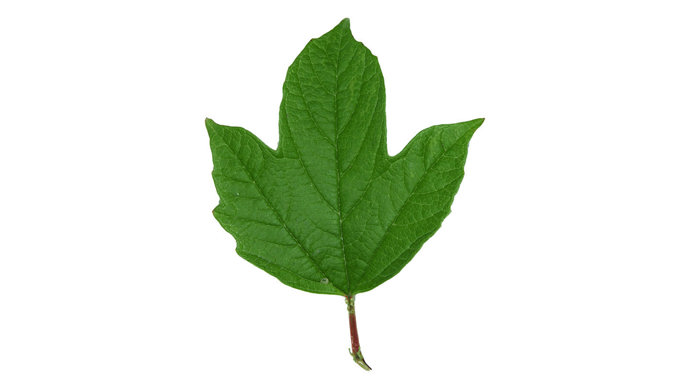
Credit: Nature Photographers Ltd / WTML
Opposite, simple, broad and three-lobed with coarse, serrated edges and sparse fine hairs on the underside. They are 5–10cm long, with a rounded base and coarsely serrated margins. In spring, the leaves are green, and they change to orange-yellow or red in autumn.
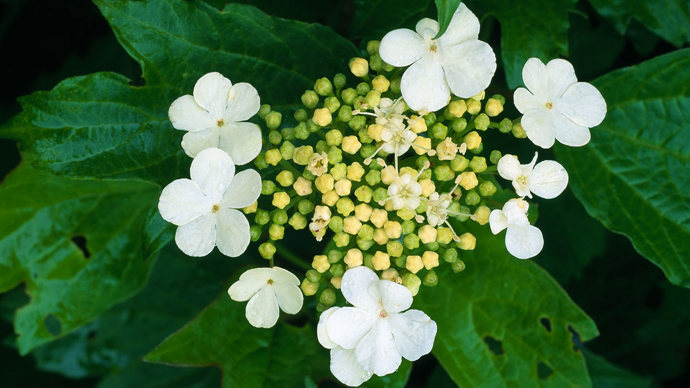
Credit: Niall Benvie / naturepl.com
Distinct, branched clusters of creamy-white, or sometimes pink, flat-topped flowers appear in May to July. Each cluster of flowers is encircled by a ring of larger, sterile, flowers.
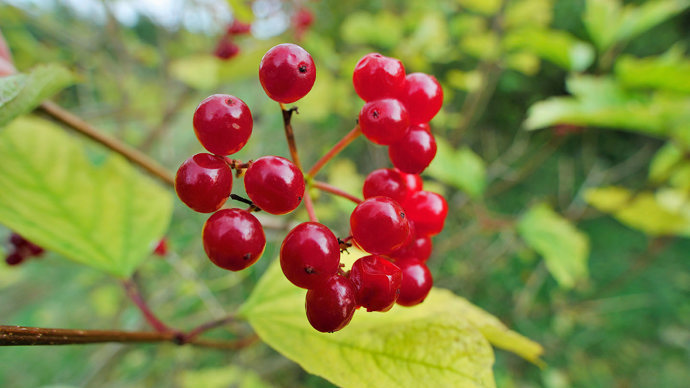
Credit: Laurie Campbell / WTML
Round, translucent, bright red berries appear in autumn in hanging bunches.
Maple (Acer campestre) as its leaves are similar, but the guelder rose leaves have three clear lobes and are softly hairy underneath, with a wrinkled upperside surface.
The common name 'guelder rose' relates to the Dutch province of Gelderland, where a popular cultivar, the snowball tree, supposedly originated.
Guelder rose grows in damp, neutral or chalky soils at low altitudes throughout the UK, but is rare in Scotland. Look for it in damp places along riversides and in fens, scrub and old hedgerows. It is planted in parks and gardens, and plants which spread from these sites to the wild sometimes include yellow-fruited varieties.
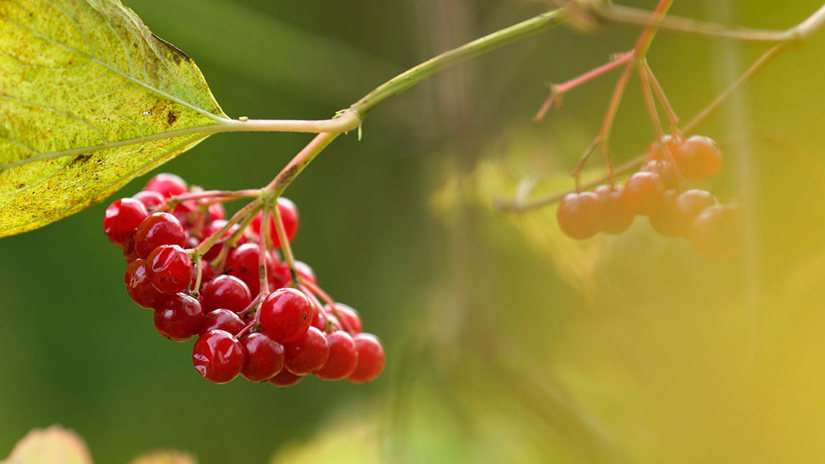
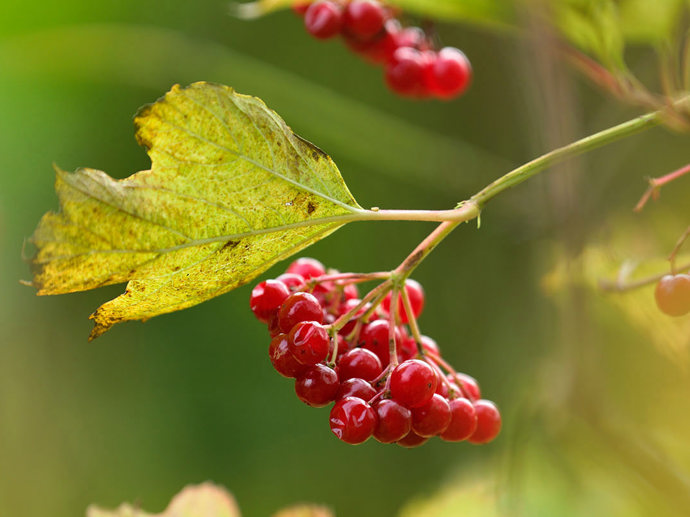
Guelder rose is an ancient-woodland indicator. If you spot it while you're out exploring, it could be a sign you're standing in a rare and special habitat.
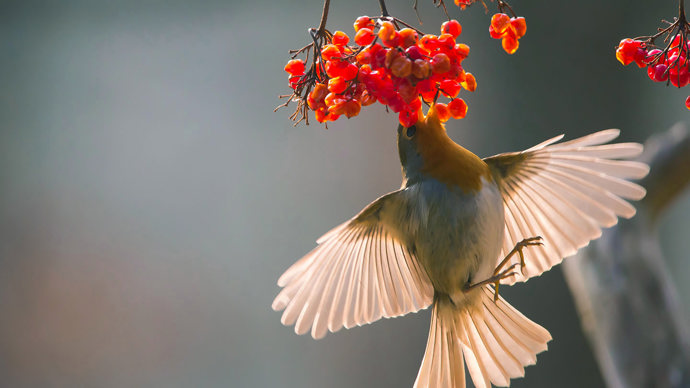
Credit: Hermann Brehm / naturepl.com
The red berries are an important food source for birds, including bullfinch and mistle thrush. The shrub canopy provides shelter for other wildlife. The flowers are especially attractive to hoverflies.
Guelder rose is one of the national symbols of Ukraine and is mentioned in many folk songs and featured in art and embroidery.
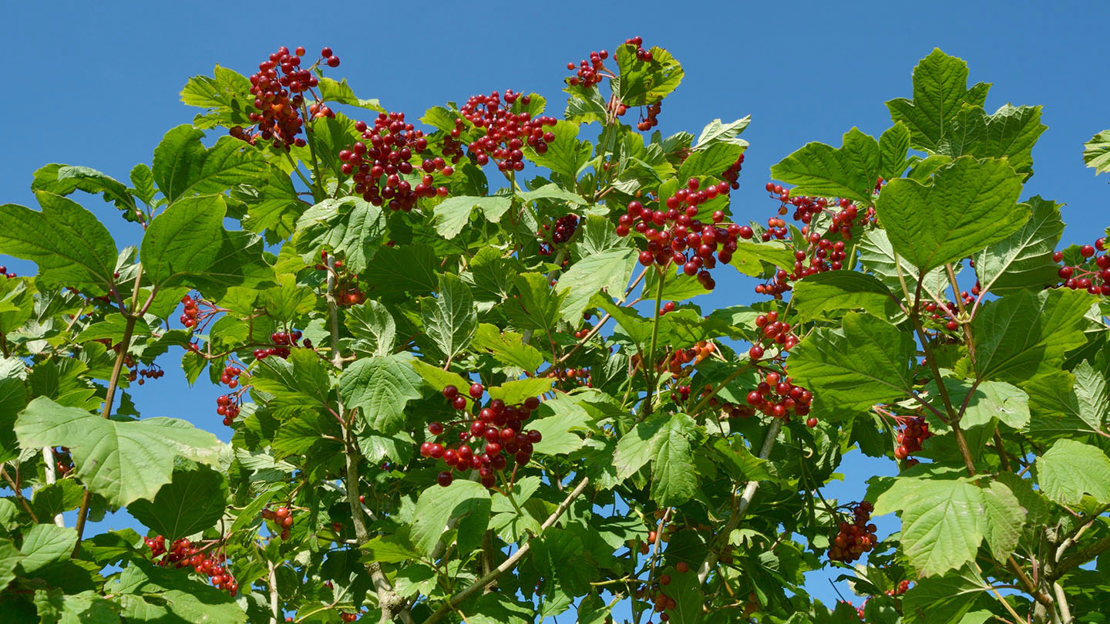
Guelder rose is grown as an ornamental plant in the UK due to its pretty flowerheads and bright juicy berries. There are many cultivars of it in garden centres. Its berries can be mildly toxic if eaten raw but they can be cooked into jelly or jam.
It is thought that the bark of the guelder rose is effective in relieving muscle cramps when used in a tincture.
In Russia, Guelder rose on the hill is a traditional wedding song.
This species is susceptible to damage from the Viburnum beetle, which defoliates, or removes, leaves from the shrub. Holes in the leaves and brown, dried leaf edges are signs of an attack. It may also be affected by leaf spot.